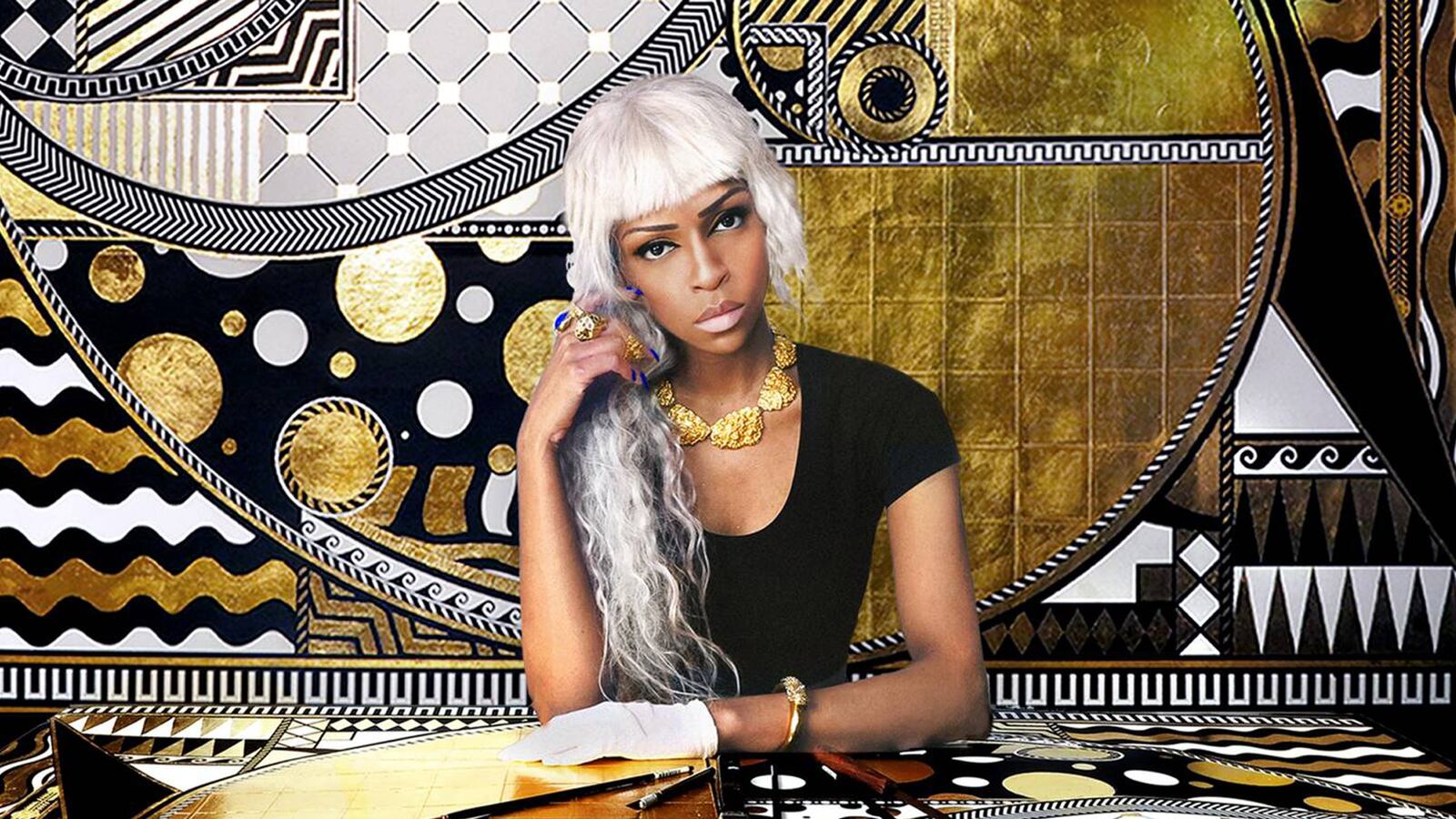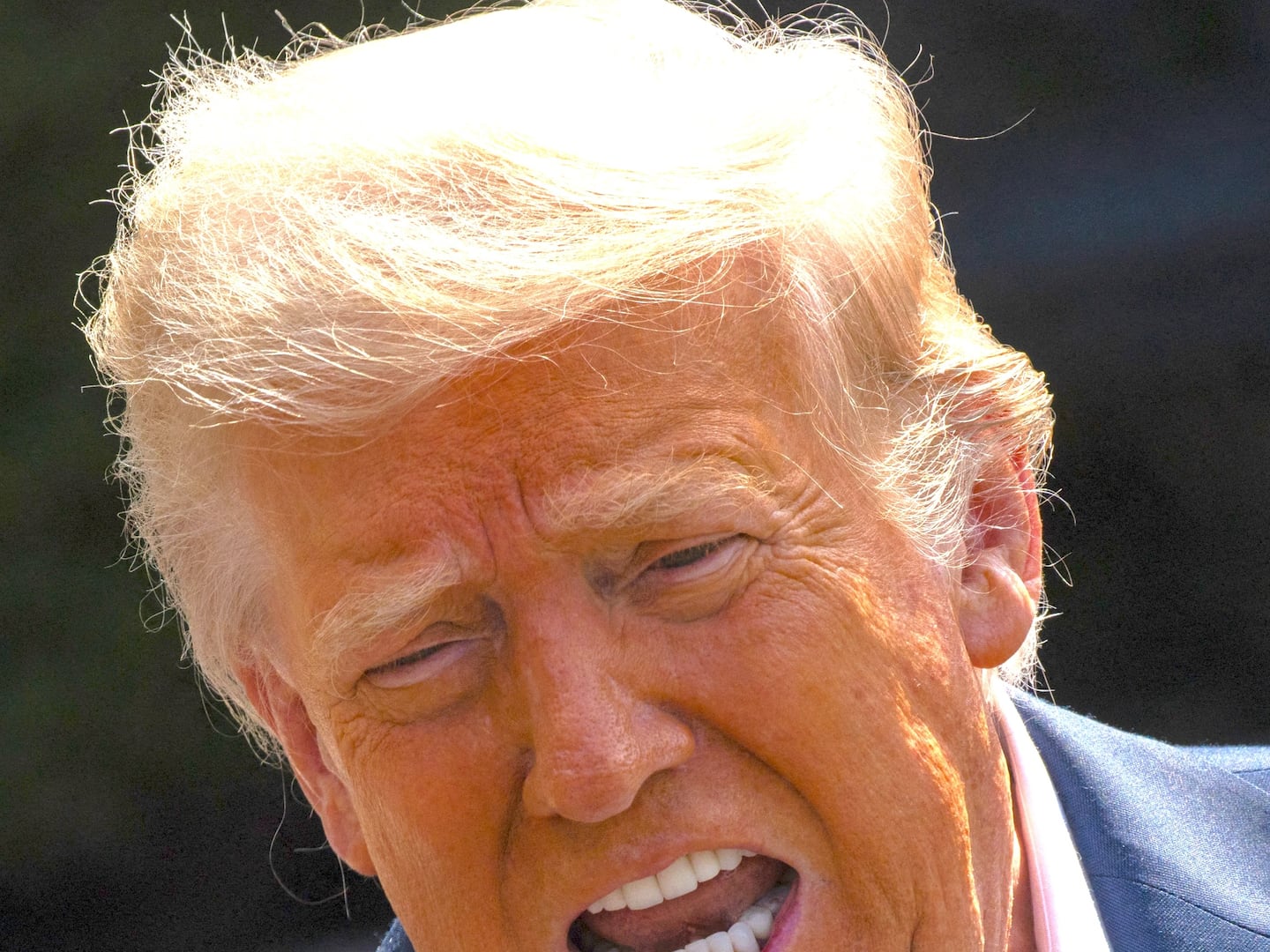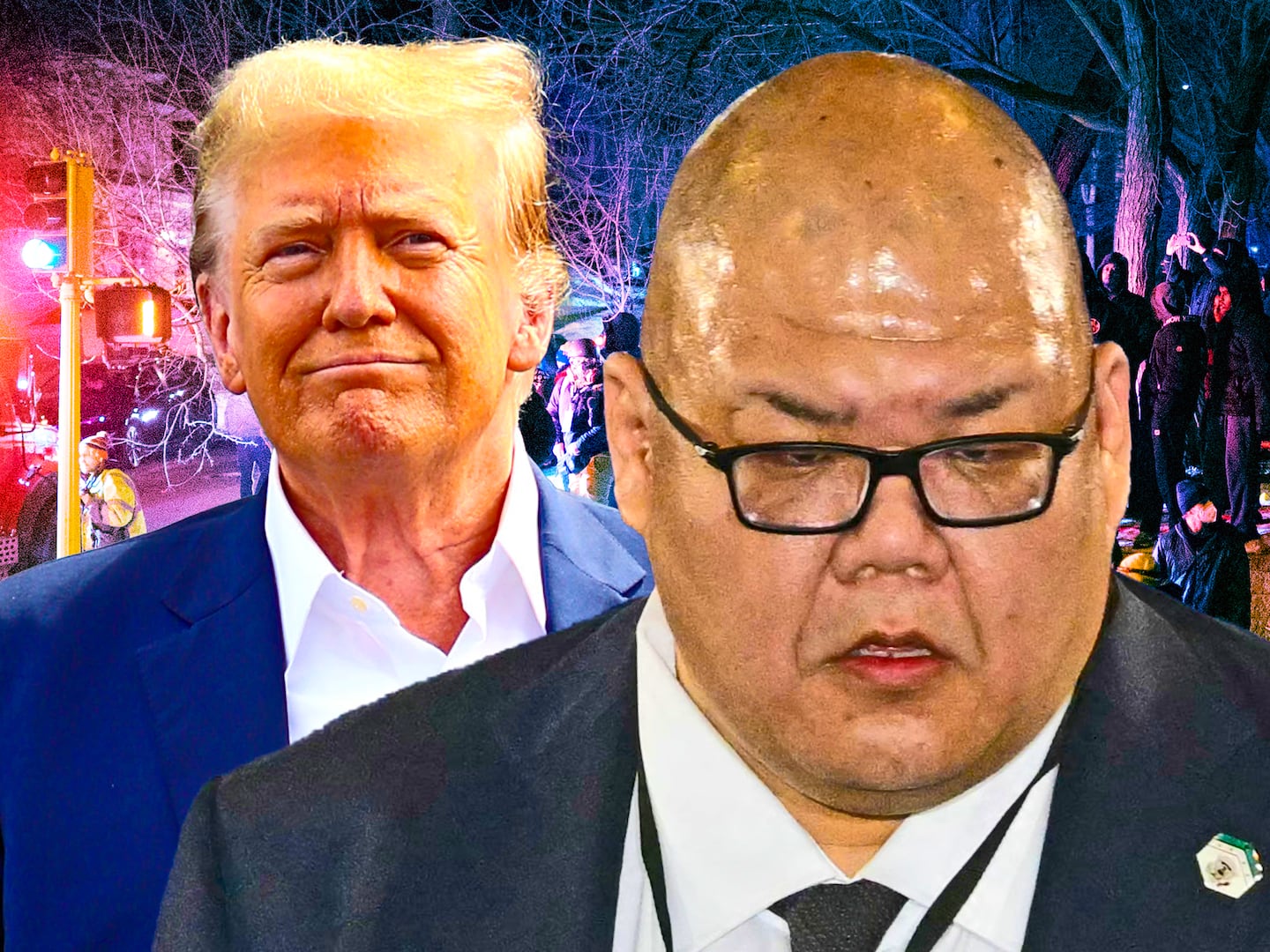
“I call this period in my life ‘The Golden Age,’ for obvious reasons,’ 27-year-old Lina Viktor tells me in the home of her first solo exhibit, Chelsea’s Gallery 151. The London native is a painterly mix of singer M.I.A. and Nicki Minaj, with a cool persona, soft British accent, and unique style—she’s decked in a black bodysuit, quilted baseball hat, and a vintage Versace fanny pack. But it’s the medium in which she’s chosen to create her art that is the most formidable: 24-karat gold. Utilizing patterns and symbolism in a strictly black, white, and gold palette (this is the first exhibit where she introduces a vibrant blue hue to the mix), Viktor’s work is an interesting juxtaposition between medieval regality and contemporary pop culture. Her exhibition, named Arcadia, is a reference to a Greek location or utopia that was known for existing in a golden age, a time of harmony, balance, and beauty in the sense of the universe, she explains. The name, however, clearly has a double meaning, with Viktor selecting gold as her main material for producing her art.
As she prepares for the launch of her exhibit, Viktor talks with The Daily Beast about her inspiration, how she got started using gold, and her favorite fashion role model (hint: it’s a Versace).
Tell me about your background.
I moved [to New York City] 11 years ago to go to college—I was actually a big theatre nerd. I dropped that after a year and started doing film—directing, producing, and screenwriting. When I graduated, I worked for Spike Lee, which was the worst experience I’ve ever had in my life. I very quickly told him that I didn’t want to do that anymore. I’m a fan of being able to do things myself, and film is a very collaborative process, you meet so many people and it’s so drawn out. It’s not instant gratification. I’ll still go back and do films if I feel so moved. But then I got very much into photography and started exhibiting, and that spun into and developed into—I feel like everything that has developed has been a need-be situation where I wanted to see something that I haven’t been exposed to do. I got into design, I had an agency for a while and I just dumped that because it was very soul-sucking and uninspiring. And then about a year and a half ago I just decided to drop that and focus on artwork.

When did you first begin painting?
I’ve always been very creative. I guess painting was a natural progression in terms of the fact that I wanted to create dynamic pieces of work that weren’t design-based or digital-based. So I used gilding, which is an ancient technique of applying gold to canvas, but I also start off with huge digital prints on canvas that I kind of manipulate and paint over. It just kind of became a means to an end. I just had this vision in my head of what I wanted my work to look like, and it required me to paint. When I say I’m a painter, I wouldn’t say I’m a painter very free-hand—it’s all very controlled and it’s all very mathematical.
How did you stumble upon using gold as your medium?
Well, I’ve always been obsessed with gold. I think humanity as a whole has always been obsessed with gold. It’s been valued and revered and sacred. It’s a form of commerce now. I’m a little bit of an astrophysics nerd; I really love stuff about the universe and learning about the origin of metals. I know that gold, for example, is made from the death of a star—a supernova. So basically, all the gold that has ever been mined on Earth today can only fit in three Olympic-sized swimming pools. It’s really a small amount—it’s a very scarce resource, hence why, I’m sure, it has so much value. But I think there is something much more implicit in the value of gold—when you see gold, real gold, it has a sort of emotional quotient to it that you can’t really get when you use fake gold. There’s an emotional reaction when people see real gold.
I can imagine it’s quite expensive to paint with gold.
It’s expensive. Obviously, I buy in bulk and I buy from a specialty gold leaf wholesaler on the West Coast. So the more you buy, per unit, it becomes a bit cheaper. But yes, it’s a bit expensive.
I feel like there aren’t too many artists in the world who use gold in their work.
I’ve known artists who have used gold sparingly or on certain things, but never [Laughs] as much as I use it. There are some pieces [in the exhibit] that are just solid gold, and obviously some are mixtures. It’s kind of a fascination that it has such deep roots and origins in human civilization, and the way that we have kind of always regarded and referred to and reacted to gold is something that has been around since the beginning of time.

Tell me about some of your pieces—are there any that you’re particularly proud of?
I did a piece last year—I’m very into mathematics and geometry—called “The Golden Ratio.” It’s a triptych—so the first piece was at a gallery downtown, and it sold—so I wanted to create variations of that, and each one has 33.3 percent more gold in it. It’s basically a play on Fibonacci sequence and the golden ratio and the actual visual representation of the golden ratio, but obviously putting my own spin on it. I think it lends itself to the way I create work, because it’s very geometric and driven by math and divine and sacred geometry.
Your work always seems to have a strict palette of black, white, and gold. What’s with the blue in some of the images?
I’ve just started—this is like the first time I’ve shown work with this blue. It just has a depth and regality to it, and is very immersive. It’s very abstract in the way you think of blue—the color itself is very abstract: you think of the sea and sky, something very vast that lacks [a] kind of dimensionality. So that’s a big reason as to why I was drawn to it.
I recently read that you have been displayed alongside Andy Warhol, Jean-Michel Basquiat, Takashi Murakami, and more. What was it like to have your work shown next to theirs?
I’m a huge fan of Warhol in terms of his business acumen as an artist; I think that’s a very interesting thing. Some of his work was cool; some was “eh.” But obviously it’s a privilege—these people are hugely famous and obviously a lot of people respect and love their work, so to be put in that canon is sort of daunting initially.
Are there any artists that you really admire?
There are. I’m more drawn to older artists more so than contemporary artists. If you’re talking about contemporary artists—I know there was a lot of debate around people like Jeff Koons, Damien Hirst, these huge prolific artists. What I do respect about those artists, the same as Warhol, is that they modernized the old system that Michelangelo and Leonardo Da Vinci used where they had a factory or studio set up and they had artisans. They were the thought behind it, they were the instigators in terms of creating work, but they had people create the work for them. And obviously that increased productivity, that’s why they could be—and are—so prolific. So in regards to that aspect, I really admire those kinds of artists. Creatively, I admire people like [Jean] Debuffet and Isamu Noguchi. I really do not try to look at a lot of other artists’ work too much because it does tend to kind of seep in and influence you, which isn’t a bad thing. I’m a bit more insular when it comes to viewing art.
Does fashion play a role in your work, or the inspiration for your work?
I guess so. It’s not fashion in regards to following labels or what’s going on during Fall/Winter or Spring/Summer. I do have particular—I’m drawn to ’90s, very decadent designers like Gianni Versace, Yves Saint Laurent in his heyday—
Are your belt and fanny-pack Versace?
Yes, I collect vintage Versace. I love it.
Donatella is my role model. I think she is one of the coolest people I’ve ever met.
She’s pretty cool, but I would have loved to have met Gianni. He is out of this world. I feel like a lot of my work is very much inspired by his aesthetic too. I really loved his—it was almost gaudy, but—I have this term I use and I’m trying to trademark it, but I call it “minimal decadence.” Because the stuff I do is very clean, but it’s very full at the same time, very dense. And obviously the gold makes it a little more decadent. And I feel like that’s the same kind of aesthetic and palette that he had—it was sumptuous and luxurious and rich, but at the same time it didn’t overwhelm.
I’m really interested in the self-portrait you have on display here.
I’ve always done self-portraiture and kind of iconizing one’s self. Not for egotistical reasons, but I guess a big impetus on what I do is trying to elevate one’s self or trying to remember our source of greatness as humans. So this painting was based on Elizabeth I’s coronation image, and I super-imposed myself in that kind of form that she took. I’m just very much influenced by people who have been very great throughout history. In placing myself in those situations I see that other people can place themselves in the situations, elevate themselves, and realize that there is no ceiling.
Lina Viktor: Arcadia is on display through July 11 at Gallery 151 in New York City.
This interview has been edited and condensed.





